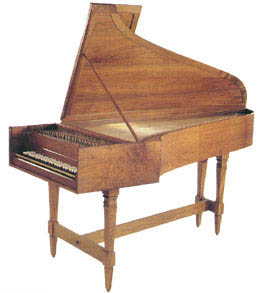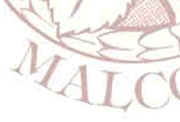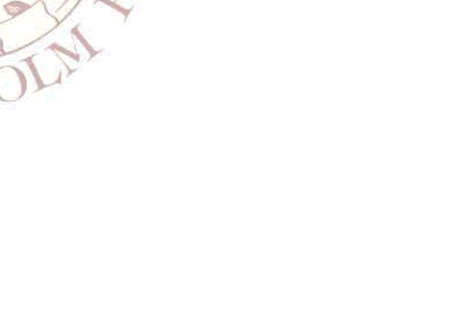

For detailed view click here
The Dufour harpsichord, the only instrument by this maker which has so far come to light, has all the characteristics of the 17th century French tradition:
lightly built casework in solid walnut, a slender bridge and nut with a moulding in the Italian manner, keys with Gothic arcading. Nothing is yet known of Dufour's life; it is possible though that he was related to Claude Dufour (1628/9 to 1709), who is recorded as working in Lyons. A two-manual harpsichord by Claude Dufour survives. The Nicholas Dufour harpsichord is now at the Shrine to Music Museum, University of South Dakota.
The sound is deep and warm, and long sustaining; it makes an ideal ensemble instrument for the mid-Baroque period.
| CASE |
bentside and shortside of solid walnut; spine of pine; lid of frame and panel construction in solid walnut. |
| SOUNDBOARD |
of spruce; six bars run parallel across the soundboard and are cut away under the bridge. Bridge and nut of pear; scale 355mm. |
| ROSE |
of parchment. |
| KEYS |
of basswood; naturals of ebony with carved arcading; sharps of solid bone. |
| JACKS |
of pear and holly with bristle springs. |
| FINISH |
wax polish. Alternatively, the instrument can be painted and gilded. |
| DISPOSITION |
two registers at 8'. A buff stop is optional |
| PITCH |
A415, transposing to A440, or A392 transposing to A415. |
| COMPASS |
originally GG/BB short octave to c'''. We most often make instruments with an extended compass: GG/BB broken octave (giving GG-AA-BB and chromatic from C) up to d'''. Our instruments with broken octaves can be transposed. |
| DIMENSIONS |
ORIGINAL |
EXTENDED |
length
width
height |
2110mm (83.0'')
763mm (30.0'')
250mm (9.8'') |
2110mm (83.0'')
789mm (31.0'')
250mm (9.8'') |
| STANDS |
the illustration shows a simple trestle stand in brown oak, which is ideal for those who wish to move the instrument regularly. The Dufour harpsichord can also be fitted with the Baroque stand shown with the anon. 1667. Customers' special requirements are always welcome. |





